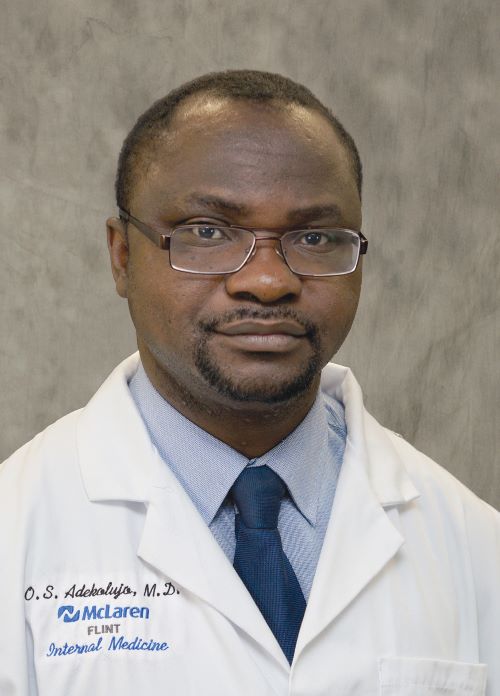Author: Leslie Toldo
There was something in the corner of Jerry Melendez’s eye, in the tear duct. He thought it was a stye or a cyst.
“The eye doctor gave me steroids,” Jerry said. “He also sent me to a plastic surgeon for a biopsy, be he said he expected that to come back benign.”
The growth in Jerry’s eye was not benign. It was cancer, and Jerry was floored.
“I got the call on July 5, 2024, and it felt like the floor caved in,” Jerry said. “I looked at my wife and she started crying, and that made me cry.”
Jerry’s surgeon referred him to oncologist Dr. Orimisan Samuel Adekolujo at Karmanos Cancer Institute at McLaren Flint, who diagnosed him with follicular lymphoma (FL). It is a slow-growing cancer of the lymphocytes resident in the lymph nodes. Lymphocytes are one of a few types of germ-fighting white blood cells found in the blood and in lymph nodes.
“Being slow growing and Jerry having no symptoms, it only needed to be observed but there was a small risk of transformation into aggressive lymphoma,” said Dr. Adekolujo. “Indeed, after a few months, Jerry became very ill and had a new swelling in the neck. Biopsy showed transformation to Diffuse Large B Cell Lymphoma, the most common type of aggressive lymphoma.”
The American Cancer Society estimates there are about 25,000 new cases a year of Diffuse Large B Cell Lymphoma. The good news is that it is curable with appropriate and timely treatment.
“It was devastating news for Jerry but I reassured him that with appropriate treatment the odds are in his favor, and I discussed the treatment options including chemotherapy and an antibody against a target on the cancerous lymphocytes,” said Dr Adekolujo
Dr. Adekolujo scheduled Jerry for six rounds of chemotherapy.
“The first week of chemo was the toughest,” Jerry said. “I had chemo tongue and chemo belly, but after the fourth round of chemo, the cancer was completely gone in the new PET scan.”
The cancer might have been gone, but the emotional and mental impact of cancer was just taking hold of Jerry’s life.

“They said there was about a 40 percent chance of cancer coming back. Every bump, every scratch, I was afraid. I was depressed, anxious, and paranoid,” Jerry said.
Jerry’s primary care doctor put him on Lexapro to treat his anxiety and depression. It was game-changing for Jerry.
“My family doctor and Dr. Sam, as I like to call Dr. Adekolujo, were both so good to me,” Jerry said. “I was shell-shocked, but I am so glad I was honest and let my doctors know I was depressed.”
Anxiety and clinical depression impact at least one in four cancer patients, according to the National Institutes of Health.
“We know that the incidence of anxiety and depression is higher in the cancer patient population than in the rest of the adult population,” said Dr. Adekolujo. “In around 20 percent of cases, depression can reach a level that it impacts daily functioning, and a good percentage of cancer patients could benefit from counseling. It is critical to a patient’s quality of life to tell their oncologist if they are experiencing symptoms.”
For Jerry, the cancer journey has been all about putting one foot in front of the other and staying steady on the path to healing.
“Trust your doctor,” Jerry said. “’You’ve got cancer,’ is the worst thing you are going to hear in your life. You have to stay strong. Don’t let it beat you; you beat it.”
To learn more about the comprehensive cancer care team at the Karmanos Cancer Institute at McLaren Flint visit mclaren.org/flintcancer.